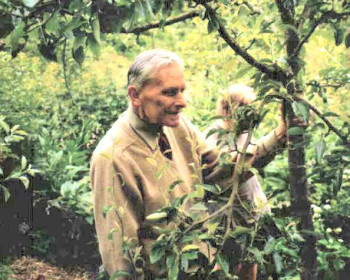
History of forest gardening
 Due
to the concept's Australian origin, many permaculture books have put a
lot
of emphasis on water management and on plants that thrive in the
tropics
or in hot and dry climates. Forest gardening takes the concepts
of permaculture and applies them to temperate regions where forest is
the natural plant community. Here in the eastern U.S., most of
the specific suggestions in the original permaculture books just don't
make sense since our garden plants and pests are completely different
from those found in the Outback of Australia.
Due
to the concept's Australian origin, many permaculture books have put a
lot
of emphasis on water management and on plants that thrive in the
tropics
or in hot and dry climates. Forest gardening takes the concepts
of permaculture and applies them to temperate regions where forest is
the natural plant community. Here in the eastern U.S., most of
the specific suggestions in the original permaculture books just don't
make sense since our garden plants and pests are completely different
from those found in the Outback of Australia.
Robert Hart was the
first to bring permaculture to the temperate forest. After
working with permaculture in the tropics for many years, he moved home
to England and turned his tiny, twelfth of an acre lot into a forest
garden. Hart knew that he was getting older, but he wanted tasty
food. One of his primary goals was to create a garden that
mimicked natural forests and thus was self-sustaining, requiring very
little work from him beyond harvesting dinner.
The garden Hart
developed had an overstory of plums, apples, pears, and rowans (along
with some native forest trees along the edges) and an understory
dominated by shade-loving gooseberries
and currants, along
with some herbs. His garden seemed to have provided at least some
of his food until his death in 2000. Can we all create
self-sufficient gardens that even our 87 year old selves can maintain?
| This post is part of our History of Permaculture lunchtime series.
Read all of the entries: |
Want more in-depth information? Browse through our books.
Or explore more posts by date or by subject.
About us: Anna Hess and Mark Hamilton spent over a decade living self-sufficiently in the mountains of Virginia before moving north to start over from scratch in the foothills of Ohio. They've experimented with permaculture, no-till gardening, trailersteading, home-based microbusinesses and much more, writing about their adventures in both blogs and books.
Want to be notified when new comments are posted on this page? Click on the RSS button after you add a comment to subscribe to the comment feed, or simply check the box beside "email replies to me" while writing your comment.
